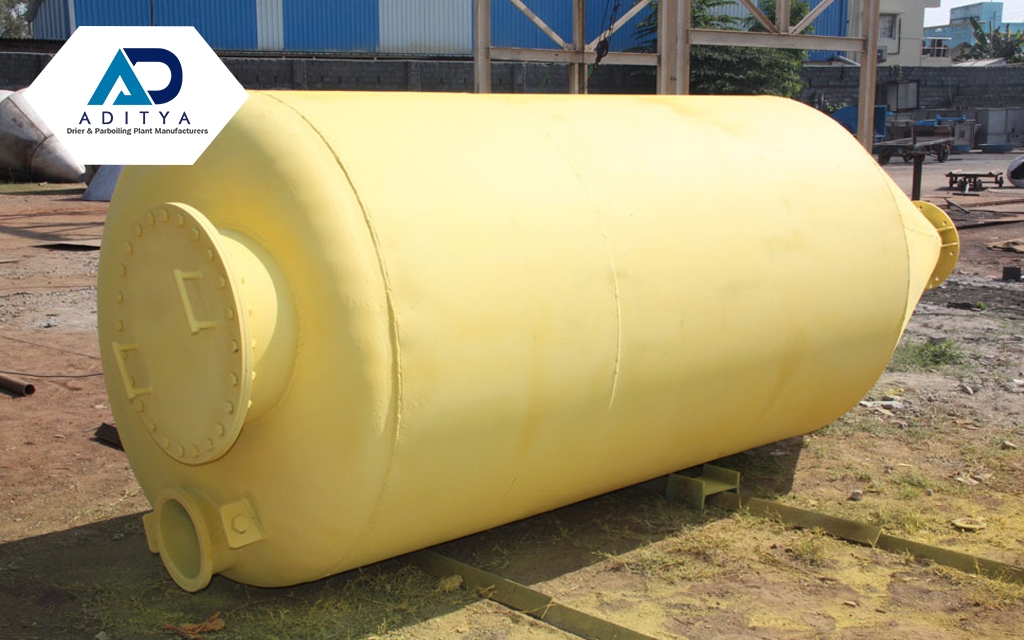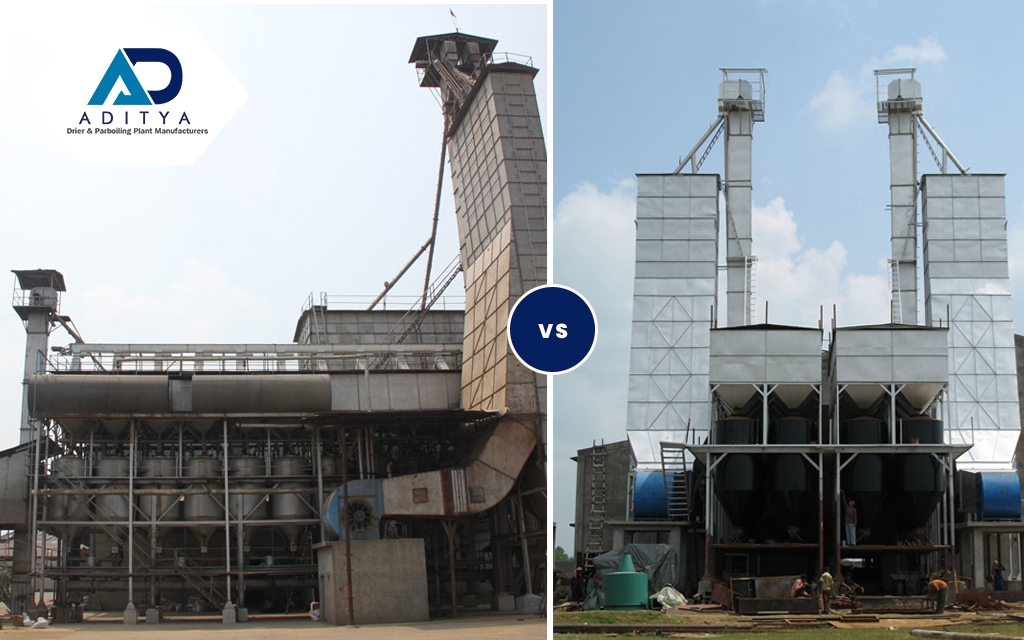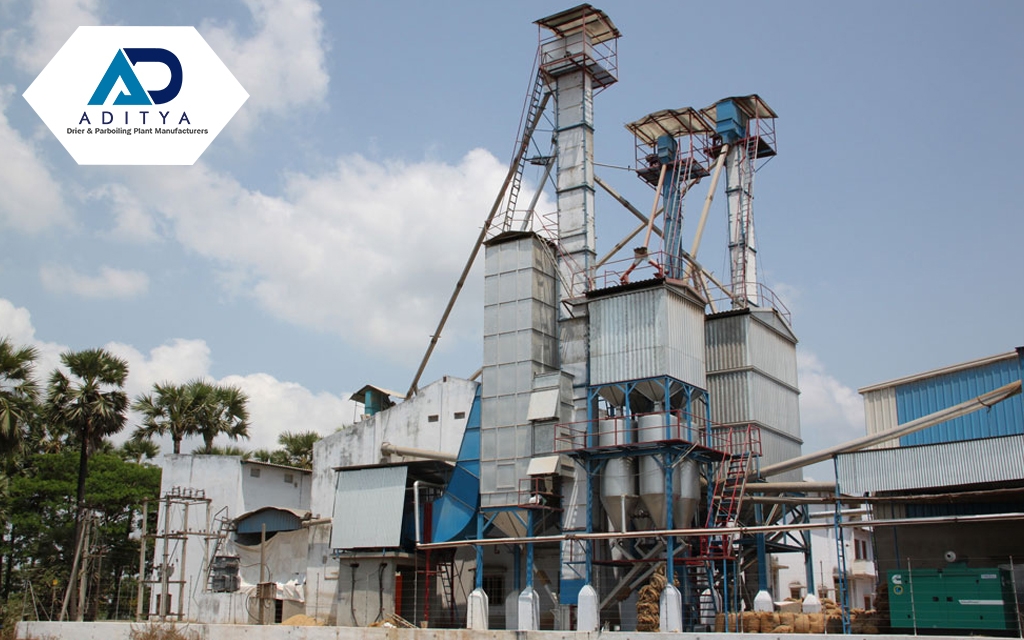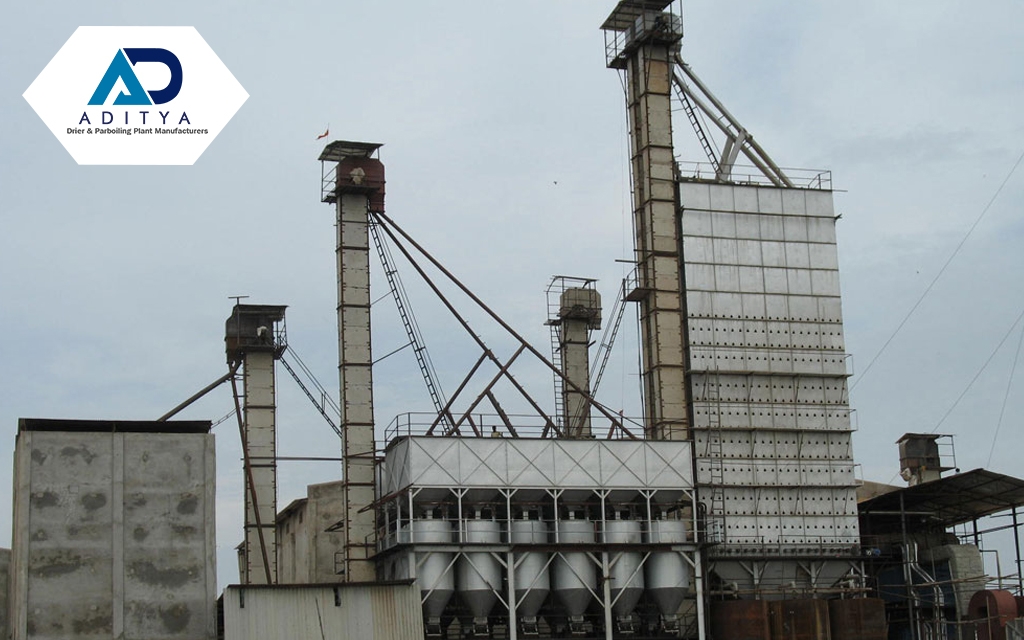The Indian Rice Milling Industry is growing steadily, driven by a growing population and consistent demand in the international market. It is expected to value an estimated US$ 392.6 million by the end of 2022.
More than 50% of all Paddy processed in India is for Parboiled Rice. Encouraged by the steady market demand, millers are keen to set up Parboiled Rice Milling units of much higher capacities.
One of the common questions that arise at this point of time is, Should we go for a high-capacity paddy drier or OPT for Multiple units of smaller driers?

Historically it has been observed in the Engineering Industry that equipment of higher capacity is more efficient compared to multiple units of smaller equipment.
A typical example of this is the sizing of trucks for the movement of bulk material. The common truck sizes prevalent in the Indian market are 10 tyre trucks – carrying 20 Tons, 12 tyre trucks – carrying 25 Tons and 14 tyre trucks – carrying 30 Tons.

It is observed that the carrying cost per ton of material is lowest for the higher capacity truck with 14 tyres and carrying 30 Tons.
Similarly, the drying cost per ton of Paddy will be much lower for Higher Capacity Driers. The cost of drying Paddy depends on the net steam consumption, the power consumption, and the manpower requirement.
Let us take an example of a Rice Mill requiring a Parboiling Equipment having a capacity of 80 tons per batch. Should the miller go for 2 units of 40 Ton capacity each or a single unit of 80 Ton capacity.
With the help of an optimum Heat Exchanger design, the husk consumption for a single 80 Ton unit will be around 12.5 Tons per batch. Whereas for 2 x 40 Tons, it will be 14 Tons. The husk savings per batch is around 1.5 Tons and assuming an average rice mill will operate around 500 batches per year the total husk saving will be [500×1.5 = 750 Tons].
The average husk cost is around Rs. 2500/- per ton. So the total saving by installing a single 80 Ton drier instead of 2 units of 40 Tons will be 18.75 Lakhs per year.
The power consumption is also lower by around 7-10%, and the manpower requirement is significantly lesser.
Considering all the above, the total savings per year will be around 20 to 25 Lakhs for the millers.
To summarize, the choice of installing a single Bigger drier is more efficient compared to installing multiple units of Smaller driers. The key benefits are :
a) Lesser Steam consumption leading to husk saving.
b) Lesser Power consumption.
c) Lesser manpower requirement.
d) Lesser space requirement.

Despite all the advantages, not all millers are choosing this option. Let’s look into the reasons behind this :
a) LACK OF AWARENESS: As there are very few manufacturers who have the technical know-how, design capabilities and infrastructure to design, manufacture and install such high capacity driers, most millers are not aware of this option.
b) HIGHER INITIAL COST: The higher capacity Parboiling and Drying Units are at most times more expensive due to the Design requirements.
Considering all the above, it is suggested that the millers study this option and opt for the highly efficient HIGH CAPACITY Parboiling Equipment.

